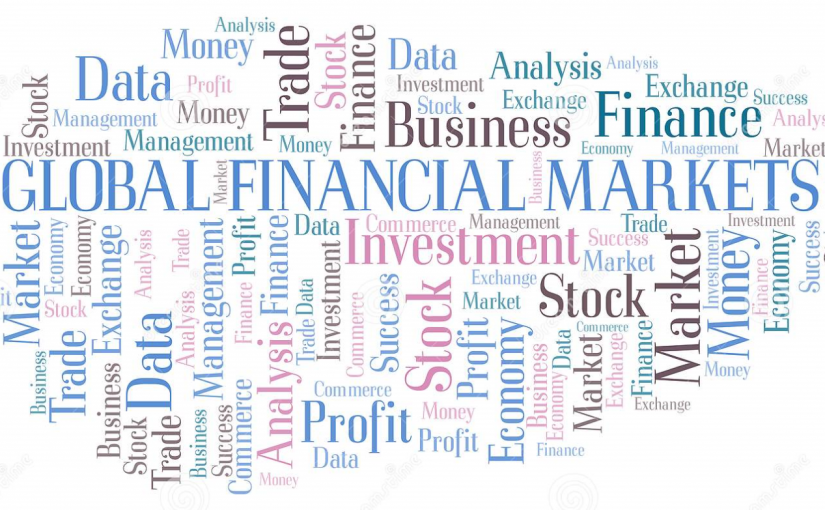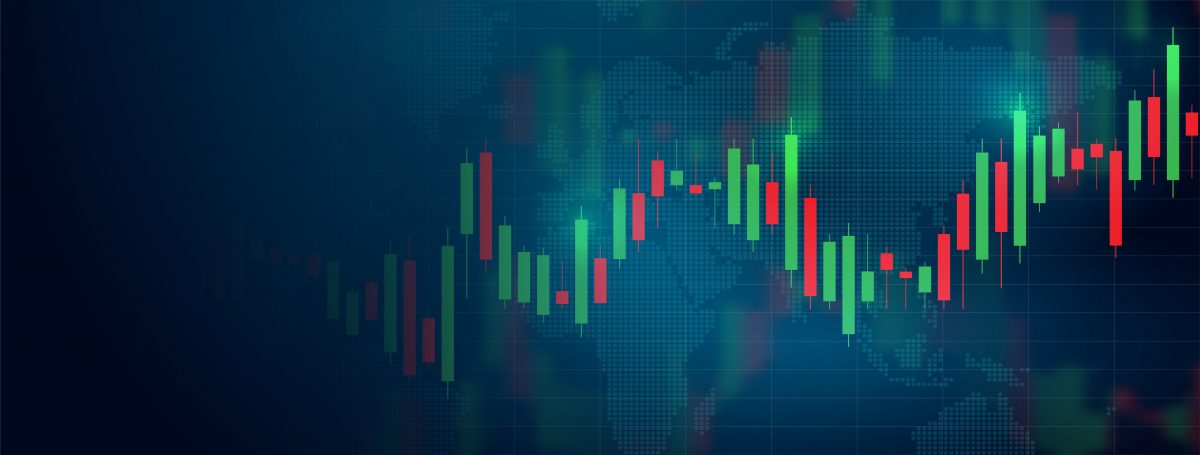Trading in FX markets reached a mammoth $6.6 trillion per day in April 2019, up from $5.1 trillion three years earlier, according to the 2019 Triennial Survey of turnover in OTC FX markets.
While foreign exchange retained its dominant status as the largest financial market in the world, knowing how FX stacks up against other major financial markets is worthwhile study, and may unlock additional trading opportunities.
Major financial markets
At its most basic, a financial market is a platform designed for the purpose of buying and selling securities. Aside from the FX market, traders participate in a number of different markets.
The derivatives market:
The derivatives market facilitates trading in financial instruments, such as options and futures contracts.
Derivatives are simply a contract between two parties, in which prices are based on the value of an underlying asset.
Futures are contracts to buy or sell a specific quantity of a security for delivery on a future date. Options, on the other hand, are contracts that give the holder the right, but not the obligation, to buy or sell a specific amount of an underlying security at a specified price until a defined time in the future – the expiration date.
The three major types of foreign exchange derivatives are forward contracts, futures contracts and options. Other derivatives include commodities, individual stocks, index futures, shares of ETFs, bonds and bitcoin.
The spot market:
The spot market, or ‘cash market’, is a platform where goods are sold for cash and immediate delivery. In some cases, ‘immediate’ means one month or less. The spot FX market, for example, follows a T+2 settlement (shorthand for trade date plus two days). Traders carry out cash market trades on an exchange or an organised market. Cash instruments comprise of equities, fixed income, currencies, commodities etc.
The stock market:
The stock market, or ‘equity market’, is well-known for investment, where participants actively trade shares of companies on a public exchange; a stock exchange is a regulated marketplace that connects buyers and sellers.
- The New York Stock Exchange (NYSE) is an example of an exchange where traders buy and sell stocks. This is a spot market.
- The Chicago Mercantile Exchange (CME) is an example of an exchange where traders buy and sell futures contracts. This is a futures market.
According to the Guinness World Records, the Stock Exchange in Amsterdam, Netherlands, is the oldest stock exchange, founded in 1602, with dealings in printed shares of the United East India Company of the Netherlands in the Oude Zijds Kapel.
The bond market:
The bond market, or more commonly referred to as the ‘fixed income market’ or ‘debt market’, provides corporations and governments a stage to issue debt. Investors purchase bonds (the lender) from issuers (the borrowers) who in return agree to repay the value of the bond (the principal value), along with the agreed coupon (the periodic interest payment made to the bond holder).
In the US government sector, bonds range from national to sovereigns, to state and regional, down to local municipalities. US Treasury debt, typically referred to as ‘Treasuries’, are issued by the US Department of the Treasury (after issuance in the primary market bonds are traded between investors in the secondary market). In the corporate sector, large companies issue bonds to finance their needs.
The commodities market:
The commodities market is in place to facilitate the buying and selling of commodities, such as gold, silver, copper, corn, oil and meat. There is a commodities futures market wherein the price of items that are to be delivered at a given future date. Spot commodities are also traded on the spot market with an expectation of delivery at settlement.
Hard commodities are solid commodities, such as gold and silver, which are typically considered an inflation hedge. Oil, copper and aluminium are industrial metals and are normally associated with the business cycle.
Trading volume
As stated, the foreign exchange market’s daily turnover reached a colossal $6.6 trillion in April 2019.
According to the 2019 Triennial Survey of turnover in OTC FX markets, the US dollar retained its dominant currency status, being on one side of 88% of all trades. The share of trades with the euro on one side expanded somewhat, to 32%. By contrast, the share of trades involving the Japanese yen fell some 5 percentage points, although the yen remained the third most actively traded currency.
Average daily trading volume for US government treasury trading, according to SIMFA (Securities Industry and Financial Markets Associations), equates to a little more than $600 billion.
The average daily trading volume on the New York Stock Exchange typically ranges between 2 and 6 billion shares. In terms of the latest daily trading volume for Wednesday November 27, 2019, total volume was $3,106,449,488, according to The Wall Street Journal.
Minimum capital requirements
Participating in the FX spot market involves no licence fees. The cost to trade is usually a spread and/or a small commission, dependent on which broker you trade with.
IC Markets does not charge a commission on Standard Accounts, but instead applies a spread mark-up of 1 pip above the raw inter-bank prices received from liquidity providers. IC Markets Raw Spread Account, however, shows the raw inter-bank spread received from liquidity providers, which charges a commission of $7 per standard lot (round turn). For traders in the forex market one can start with an incredibly low amount of capital. For example, with IC markets, you can open an account and trade live markets with as little as $200.
Trading in the futures market requires a little more capital. You must have enough funds in the account to cover the larger margin requirements. There is no legal minimum on what balance you must maintain in order to day trade futures, although you must have enough in the account to cover all day trading margins.
Based on US law, as stated by the US Securities Exchange Commission (SEC), day trading US equities in the US requires a $25,000 minimal cash requirement.
Final thoughts
Although the article has not explored each market in detail, the piece does highlight some of the key similarities and differences. Overall, the FX spot market still appears the smoother alternative:
- The FX spot market, boasting huge liquidity, offers easy access to currency trading. High liquidity allows traders to enter and exit the markets with little price slippage.
- Compared with other markets, the initial capital requirement in FX remains competitive; spreads and commissions are also extremely tight nowadays.
- While having 1000s of stocks to sift through may be fun at the beginning, this is likely to become overwhelming, particularly for newer traders. Trading forex eliminates this problem with only a few major markets to analyse each day.
- Market hours in forex essentially permits one to pick and choose when to trade.
Notes:
https://www.bis.org/statistics/rpfx19_fx.pdf
https://www.guinnessworldrecords.com/world-records/oldest-stock-exchange
https://www.sifma.org/resources/research/us-treasury-trading-volume/
https://www.wsj.com/market-data/stocks/marketsdiary
https://www.investopedia.com/terms/s/spotmarket.asp




